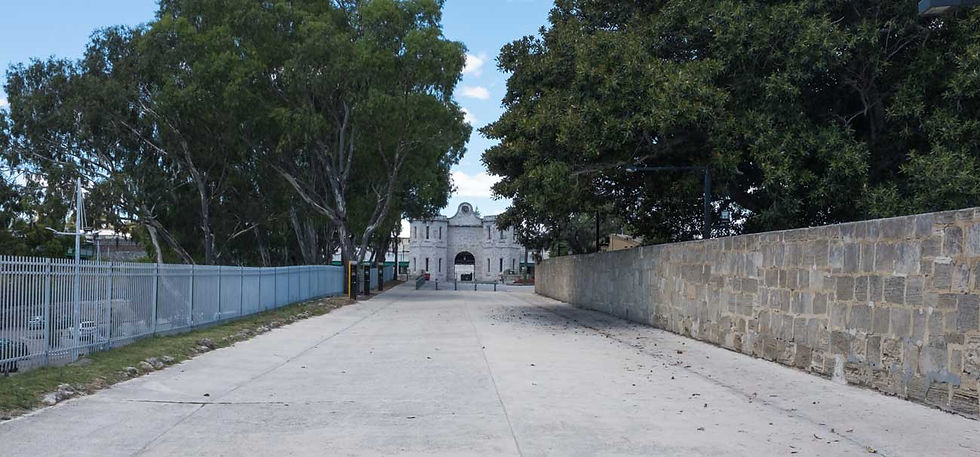
Fairbairn Street Ramp

Significance
The Fairbairn Street Ramp is a key historical convict-built component of the Fremantle Convict Establishment. It served a much-needed historical function, initially in the construction of the Prison and subsequently in providing a direct connection to the Prison from the lower ground of Fremantle. The Ramp is a technological and engineering achievement demonstrated in its original length and scale and use of quarried limestone spoil in its construction. Aesthetically, the Ramp also visually connects with, and enhances, the presentation of the Terrace and Gatehouse.
Those parts of the Fairbairn Street Ramp that are of exceptional significance are:
-
Fairbairn Street Ramp, including form and fabric and archaeological evidence of earlier elements, e.g. tram line
-
the batter banks either side of the Ramp
-
archaeological evidence of the Fremantle Prison vegetable garden
No parts of the Fairbairn Street Ramp have been assessed as being of considerable or some significance.
The stone wall on the southern side of the Ramp is assessed as being of little or no significance (insofar as it relates to the Prison). It is possible that it is of some significance relative to the Fremantle Football Oval.
Principles
For additional guidance with respect to the management of the Fairbairn Street Ramp see ‘Overarching Policy – Setting’.
PRINCIPLE 49: The Fairbairn Street Ramp should be retained and conserved while reinforcing its role as the main pedestrian access to the site and the historic link to the City of Fremantle.
PRINCIPLE 50: The Ramp’s visual and functional relationships with the Terrace and Gatehouse, including the axial relationship with the Gatehouse and historic entry to the Prison, should be maintained.
PRINCIPLE 51: The visibility of the constructed form of the Ramp, including the batters to the Ramp and their exposed limestone spoil, should be maintained.
PRINCIPLE 52: Interpretation of the Fairbairn Street Ramp is essential to conveying the history of the Prison, how it was constructed, and how it was accessed directly from the City of Fremantle (old Fremantle).
PRINCIPLE 53: No new buildings or structures should be built on the Ramp apart from appropriate interpretation devices.
PRINCIPLE 54: No new works should encroach into or otherwise impact on the surviving extent of the Ramp.
PRINCIPLE 55: No new buildings or structures should be built up against or close to the exposed sides or batters of the Ramp, other than very minor or temporary elements.
PRINCIPLE 56: The modern surface treatments, fences, balustrades and the like can be retained.
Structures & Spaces Actions
ACTION 15: The trees which are physically and visually impacting on the Ramp, especially on the north side, should be selectively removed or pruned, while conserving significant trees to prevent further impacts on the Ramp.
ACTION 16: Repair the battered sides of the Ramp where the tree roots are impacting it.
ACTION 17: Continue to use the Ramp as a pedestrian access route to the Prison.
ACTION 18: Enhance interpretation measures at the Ramp.
ACTION 19: Any works to the Ramp or Parry Street carpark involving ground disturbance or the introduction of services should be preceded by an archaeological investigation of the location having regard to the potential for archaeological evidence of the tram lines and Fremantle Prison vegetable garden to survive.
ACTION 20: Encourage removal of the limestone wall lining the south side of the Ramp.
